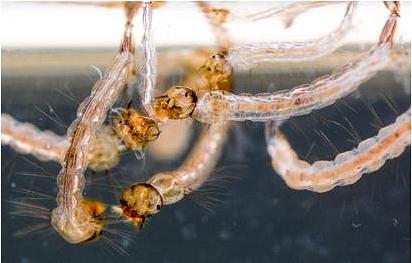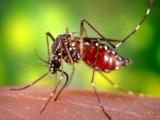Two different groups today—one from Argentina and the other from Canada and Mexico—unveiled new traps designed to help control the Aedes aegypti mosquitoes that spread Zika and other diseases.
Cup trap from Argentina
The group from Argentina developed a plastic ovitrap, a small cup made from low-density polyethylene that has been infused with pyriproxyfen. The insecticide is immediately released from the plastic when the cup fills with water. The team reported its findings yesterday in the Journal of Medical Entomology.
Female Aedes aegypti mosquitoes like to lay their eggs in small containers, such as pots and tires that hold water, so the trap is designed to be an attractive option.
Grayson Brown, PhD, an entomologist who wasn't part of the group, said in a press release from the Entomological Society of America (ESA) that the trap is a good idea. "Pyriproxyfen likes to move around in the environment. Molding it into the plastic like that keeps it where you put it."
Tire trap from Canada, Mexico
Meanwhile, a team from Canada and Mexico today described a mosquito trap made from sections of old tires called an "ovillanta," arranged in a mouth-like shape with a cavity that holds a nontoxic milk-like substance to attract mosquitoes.
A paper or wood strip that floats on the surface collects the eggs and is removed twice a week for monitoring, then destroyed with fire or ethanol, according to a press release today from Grand Challenges Canada, which supported the project.
The researchers tested the system in Guatemala for 10 months, reporting their findings today in the F1000Research on its Zika and Arbovirus online channel.
Liquid attractant is drained, filtered, and put back in the tire, and is designed to concentrate mosquito pheromones, making the traps progessively more attractive with each use, according to the report. Researchers had used a similar device to battle a West Nile virus outbreak in northern Ontario.
The investigators found that the traps collected seven times more eggs than standard traps, and they observed that no new dengue cases were reported in the vicinity of the testing site.
Gerardo Ulibarri, PhD, from Laurentian University and leader of the study, said in the press release that targeting the mosquitoes with ovillantas is one-third the cost of destroying larvae in ponds and 20% the cost of using pesticides to combat adult mosquitoes.
Cases on St. Lucia
In related news, the Caribbean island nation of St. Lucia reported its first two local Zika virus cases, the St Lucia Times reported yesterday, citing anonymous but reliable sources.
The patients are a 25-year-old man and a 28-year-old woman, and both cases were confirmed by tests at the Caribbean Public Health Agency, according to the report.
See also:
Apr 6 J Med Entomol abstract
Apr 6 ESA press release
Apr 7 F1000Research report
Apr 7 Grand Challenges Canada press release
Apr 6 St. Lucia Times story























